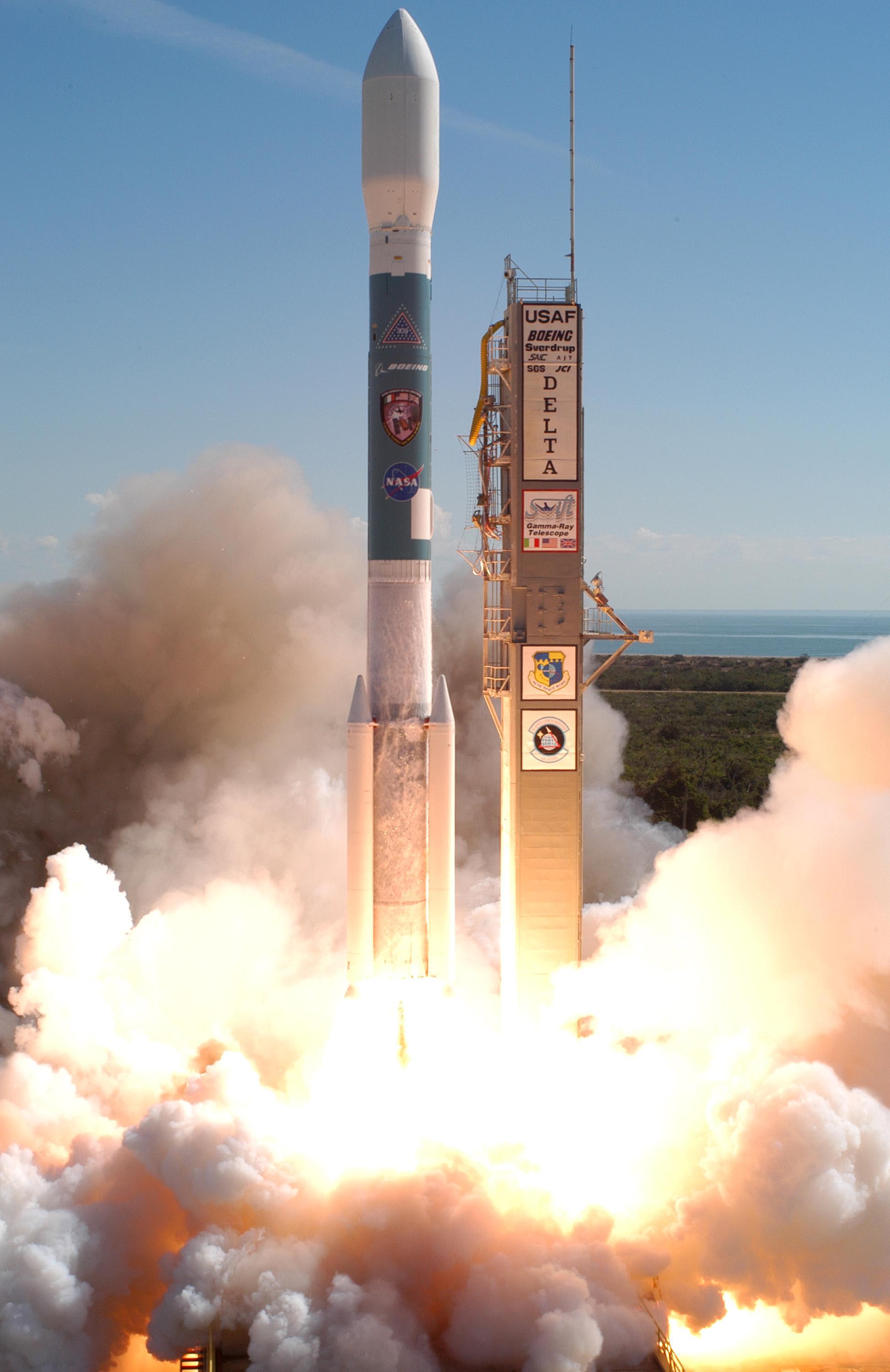GRB50 Schedule
Sunday, August 27
7:00-8:30 P.M. - Dinner (on-site)
Monday, August 28
07:15-08:45: Breakfast (on-site)
Session 1: GRBs at 50 years: A Look back at how we got here
Chair: John Nousek
09:00-09:15: John Nousek - Welcome and Logistics
09:15-09:45 (25+5): Chryssa Kouveliotou - Observations of Gamma-Ray Bursts
09:45-10:15 (25+5): Ralph Wijers - Theory of Gamma-Ray Bursts
10:15-11:00: Break 1 - Coffee and Poster Viewing
11:00-11:30 (25+5): Dieter Hartmann - Remembering Key Figures in the
History of Gamma-Ray Bursts
11:30-11:45 (12+3): Eric Burns - The Fifth Decade of the InterPlanetary Network
11:45-12:00 (12+3): Leo Singer - General Coordinates Network (GCN): NASA’s Next Generation
Time-Domain and Multimessenger Astronomy Alert System
12:00-1:15: Lunch (on-site)
Session 2: Prompt Emission and Multi-messenger Signals (including
VHE)
Chair: Wen-fai Fong
1:15-1:45 (25+5): Bing Zhang - Prompt Emission
1:45-2:00 (12+3): Tyler Parsotan - Demystifying the Prompt Emission of GRBs
2:00-2:15 (12+3): Om Sharan Salafia - The short gamma-ray burst population in a
quasi-universal jet scenario
2:15-2:45 (25+5): Eleonora Troja* - Short GRBs as Multi-messenger Sources
2:45-3:00 (12+3): Gayathri Raman - Swift-BAT GUANO follow-up of Gravitational Wave triggers
in the third LIGO/Virgo Observing Run
3:00-3:15 (12+3): Avery Eddins - Radio Counterparts of Binary Neutron Star Mergers from
Present to Future
3:15-4:00: Break 2 - Coffee and Poster Viewing
4:00-4:30 (25+5): Lara Nava - VHE Emission
4:30-4:45 (12+3): Samanta Macera - High and Very-high-energy spectral component of GRB
prompt emission.
4:45-6:15: Special Session on GRB 221009A (8+2 minutes each)
- Stephen Lesage: Fermi GBM Analysis of the BOAT: GRB 221009A
- Maria Edvige Ravasio: Discovery of a transient MeV emission line in
the brightest GRB ever detected
- Rachel Proctor-Murphy: The IceCube Search for Neutrinos from
GRB221009A
- Lauren Rhodes: GRB 221009A: a radio perspective in unprecedented
detail
- Tanmoy Laskar: The Radio to GeV Afterglow of GRB 221009A
- Brendan O’Connor: A structured jet explains the extreme GRB 221009A
- Manisha Shrestha: Putting together the long gamma-ray burst’s
progenitor puzzle
- Gokul Srinivasaragavan: A Sensitive Search for Supernova Emission
Associated with the Extremely Energetic and Nearby GRB 221009A
- Peter Blanchard: Constraints on the Supernova Associated with GRB
221009A from Late-time JWST Observations
6:30-8:00: Dinner (on-site)
Tuesday, August 29
07:15-08:45: Breakfast (on-site)
Session 3: GRBs as Probes: Host Galaxies and the High-z Universe
Chair: Susanna Vergani
09:00-09:30 (25+5): Nial Tanvir - GRBs as Probes of the Early Universe
09:30-09:45 (12+3): Andrea Saccardi - Dissection of a z = 6.3 galaxy thanks to GRB 210905A
09:45-10:00 (12+3): Nick White - Prospects for Reionization History Constraints from Future
GRB Afterglows
10:00-10:45: Break 1 - Coffee and Poster Viewing
10:45-11:15 (25+5): Patricia Schady - GRB Host Galaxies
11:15-11:30 (12+3): Huei Sears - Long Gamma-Ray Bursts as Stellar Tracers of the z~5
Universe
11:30-11:45 (12+3): Anya Nugent - Characterizing the Host Environments of Short GRBs: From
the Ultra Faint to the Highest-Redshift
11:45-12:00 (12+3): Nicola Gaspari - The location of NS mergers through short GRB hosts and
NGC 4993
12:00-12:15 (12+3): Sharan Banagiri - Constraining the orbital parameters of neutron star
binaries using short gamma-ray bursts and core-collapse supernova
12:15-1:30: Lunch (on-site)
Session 4: Jets and Afterglow Physics
Chair: Alexander van der Horst
1:30-2:00 (25+5): Geoff Ryan - Theory and Simulation of GRB Jets
2:00-2:15 (12+3): Paz Beniamini - Relativistic Jets from all angles
2:15-2:30 (12+3): Ore Gottlieb - Inferring the underlying physics of GRBs through the first
end-to-end GRMHD simulations
2:30-3:00 (25+5): Alessandra Corsi: Observations of GRB Jets
3:00-3:45: Break 2 - Coffee and Poster Viewing
3:45-4:00 (12+3): Anna Ho - Discovering Relativistic Stellar Explosions Using Optical
Time-domain Surveys
4:00-4:15 (12+3): Hüsne Dereli-Bégué - A wind environment and Lorentz factors of tens
explain gamma-ray bursts X-ray plateau phase
4:15-4:30 (12+3): Ramandeep Gill - Steep and Shallow Jet Angular Structures Revealed by the
Afterglows of Gamma-Ray Bursts
4:30-4:45 (12+3): Taya Govreen-Segal - The hydrodynamic evolution of GRB jets - implications
on measuring the system geometry, the jet initial structure and H0
4:45-5:15: Special Session on GRB230307A (8+2 minutes each)
- Sarah Dalessi: Fermi-GBM Observation of the Very Bright Burst 230307A
- Simone Dichiara: Precursors from compact binary mergers
- Andrew Levan: JWST imaging and spectroscopy of a kilonova in the
exceptionally luminous GRB 230307A
5:15-5:30: Special Session on AT2023lcr
- Anna Ho
- Antonio Martin-Carrillo
5:30: Conference Photo
6:30-8:30: Dinner (in the Pavillion)
7:30-8:30 (45+15): Robert Nemiroff: The Great Astronomy Debate of 1995: The Distance Scale
to Gamma-Ray Bursts
Wednesday, August 30
07:15-08:45: Breakfast (on-site)
Session 5: Progenitors and Central Engines
Chair: Andrew Levan
09:00-09:30 (25+5): Chris Fryer - The GRB-SN Connection
09:30-09:45 (12+3): Christopher Irwin - Insights on the origin of low-luminosity GRBs from a
revised shock breakout picture for GRB 060218
09:45-10:00 (12+3): Andy Fructer - The Redshift of GRB 190829A/SN 2019oyw: A Case Study of
GRB-SN Evolution
10:00-10:45: Break 1 - Coffee and Poster Viewing
10:45-11:15 (25+5): Jillian Rastinejad* - Observational searches for kilonovae
11:15-11:30 (12+3): David Palmer - Millisecond Variation in Short GRBs as a Signature of
Magnetar Giant Flare Origin
11:30-11:45 (12+3): Binbin Zhang* - Gamma-ray Bursts with Peculiar Origins
11:45-12:00 (12+3): Ariadna Murguia-Berthier - The fate of the merger remnant in GW170817
and its imprint on the jet structure
12:00-1:15: Lunch (on-site)
Session 6: Future Discoveries: Missions and Needed Capabilities
Chair: Dieter Hartmann
01:15-01:30 (12+3): Frederic Daigne - SVOM
01:30-01:45 (12+3): Judy Racusin* - SmallSats and CubeSats
01:45-02:00 (12+3): Hui Sun* - Einstein Probe
02:00-02:15 (12+3): Dan Kocevski - Starburst
02:15-02:30 (12+3): Brad Cenko - ULTRASAT
02:30-02:45 (12+3): Alyson Joens - COSI
02:45-03:30: Break 2 - Coffee and Poster Viewing
03:30-04:45: Panel Discussion on Needed Future Capabilities
Panelists: Eric Burns, Tanmoy Laskar, Tyler Parsotan, Patricia Schady, Om Sharan
Salafia.
04:45-05:15: Mission Gong Session
- J. Eric Grove: Early Results from the Glowbug Gamma-ray Transient
Telescope
- Jakub Ripa: First results from GRB-detecting nano-satellites and a
small UV space telescope for transient follow-up
- Daniel Violette: BurstCube: An Imminent Gravitational Wave Counterpart
CubeSat
- Cuán de Barra: Qualification and Development of a Cerium Bromide
Gamma-ray Burst Detector on a 2U CubeSat
- Joseph Colosimo: BlackCAT: A CubeSat for Detecting High-Redshift
Gamma-Ray Bursts and Multi-Messenger Counterparts
- Suman Bala: Daksha: On Alert for High Energy Transients
- Hatsune Goto: HiZ-GUNDAM mission overview and performance of wide
field X-ray monitor
- Mark McConnell: The LargE Area burst Polarimeter (LEAP) - A NASA
Mission of Opportunity for the ISS
- Cuán de Barra: Development of a 6U CubeSat to Detect and Localize
GRBs in the Multi-Messenger Era
- David Murphy: COMCUBE: A CubeSat-sized Compton telescope
- Karla Oñate Melecio: The Gamma Ray Polarimeter Experiment (GRAPE) - A
Balloon Borne Compton Telescope
- Josh Grindlay: High-res SmallSat Extremes Explorer (HSEE): 3 keV-10
MeV GRB spectra&ML=>Pop III stars and TDAMM
- Nicholas White: The Gamow Explorer
- Nial Tanvir: THESEUS - Transient High Energy Sky and Early Universe
Surveyor
- Biswajit Banerjee: Detection of early (prompt) emission in the
very-high energy gamma-ray bursts: ET, CE and CTA in action
- Antonino D'Aì: Prospects for GRB detections with the ASTRI Mini-Array
- Joe Bright: GRB Radio Astronomy in the SKA Era: The Importance of
Dedicated Transient Interferometers
05:15-05:30: Concluding Remarks
06:30-8:00: Dinner (on-site)
* Remote Presentation


